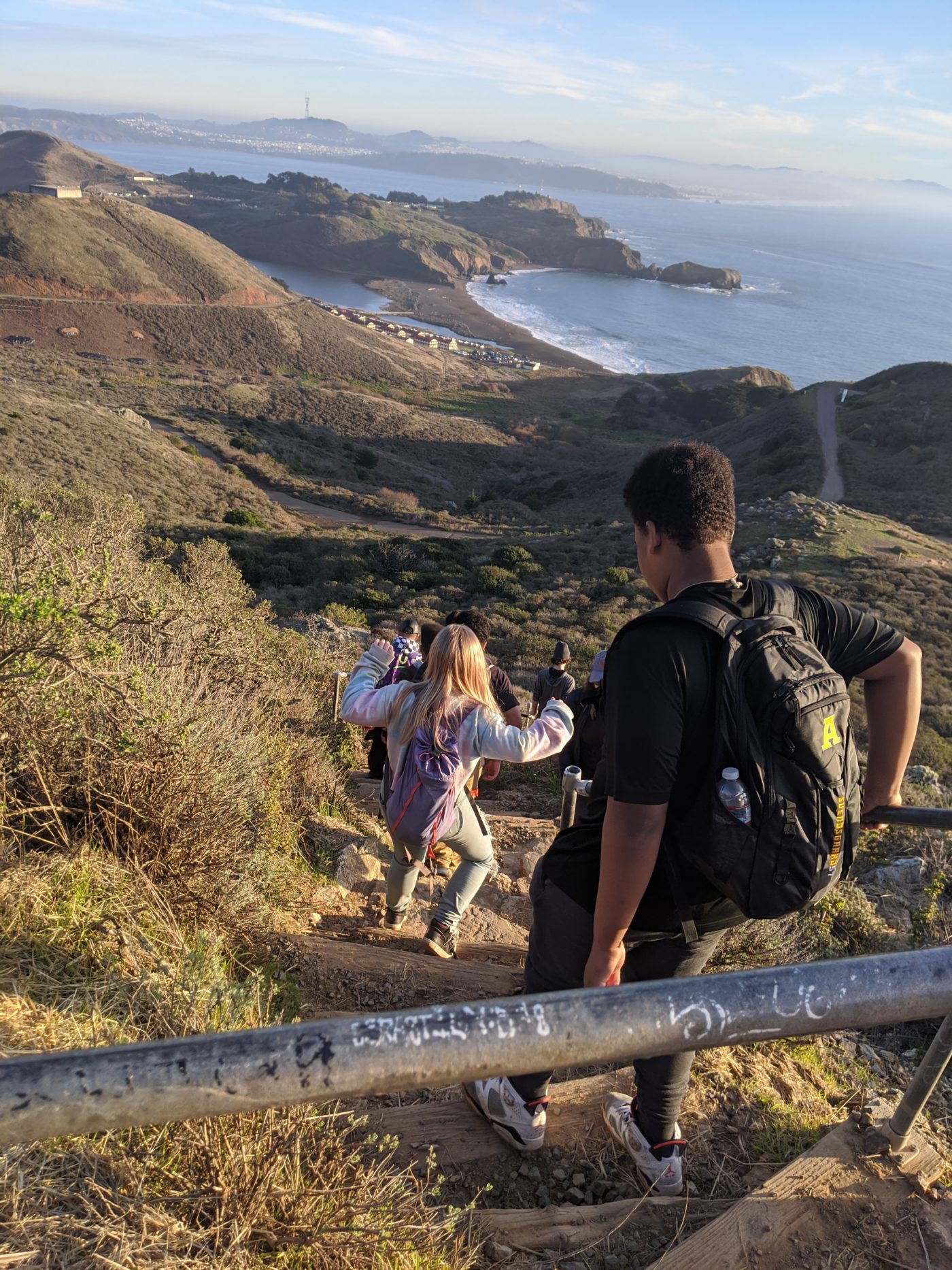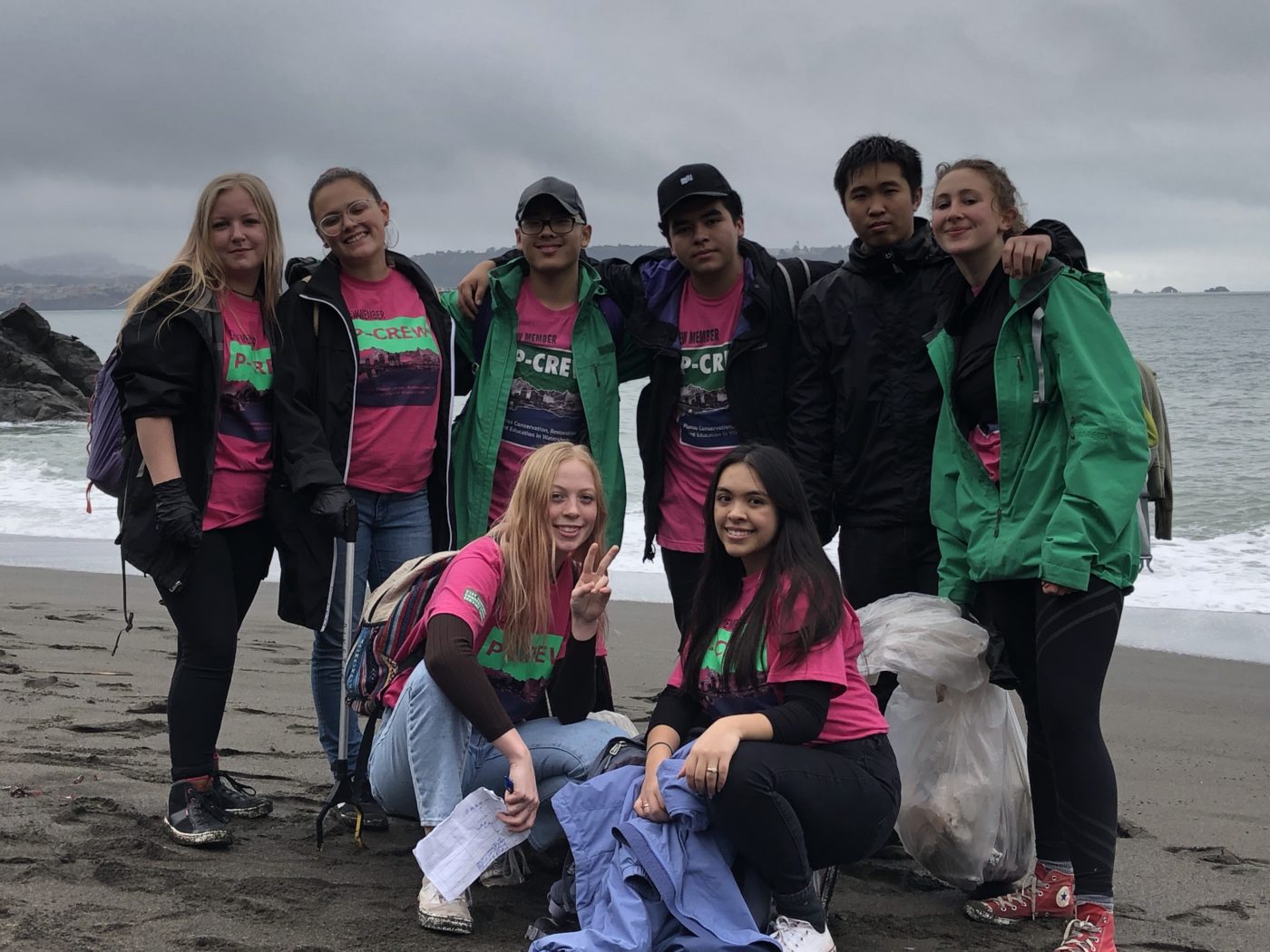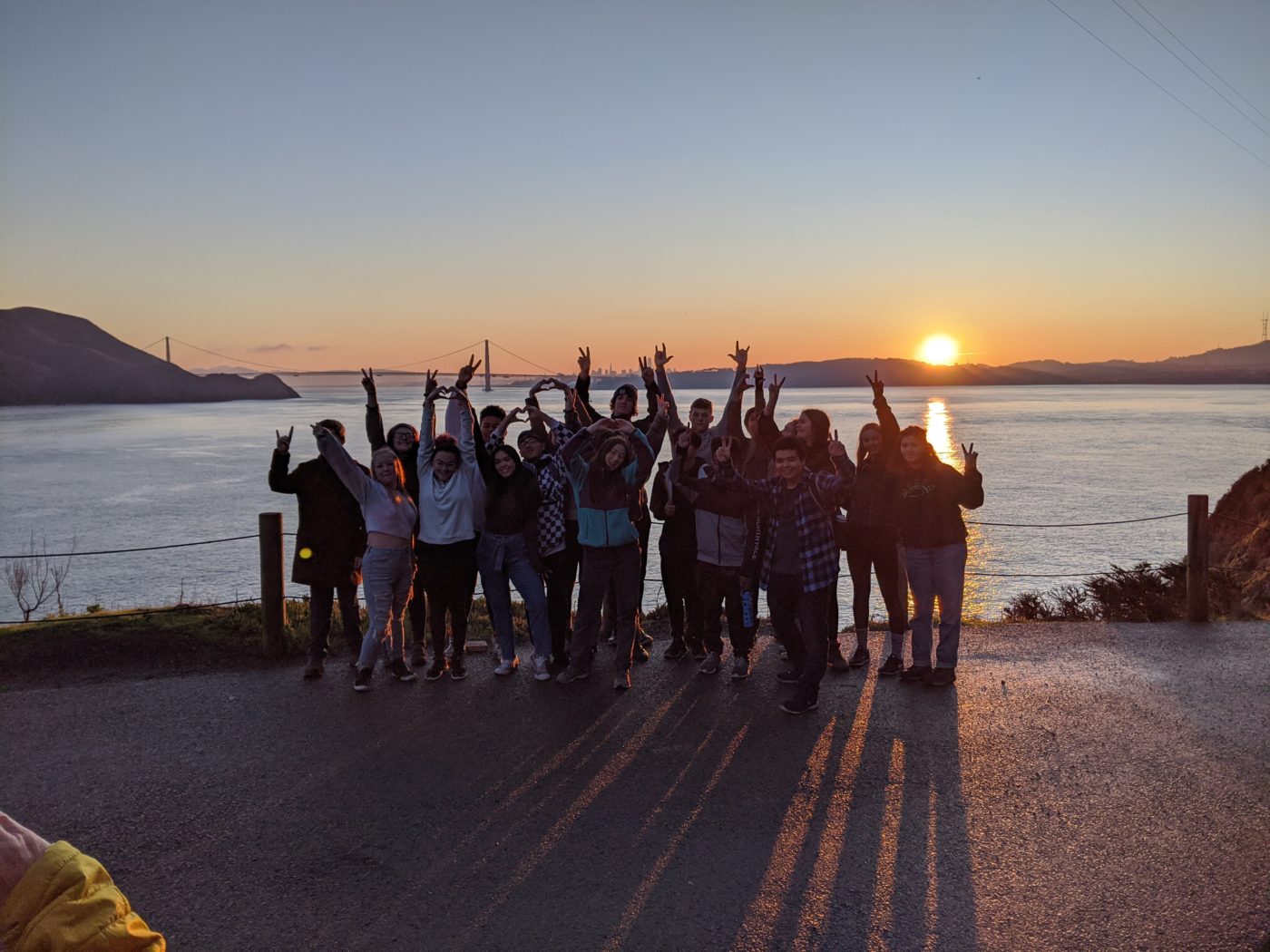
During the summer, P-CREW crew members spend five weeks in the wilderness, working 8-hour days doing physical labor, backpacking, and living in close proximity with 11 other teenagers and two crew leaders. For many, it is their first time having a “real” job, camping, or going an extended period of time without access to the internet or cell phones. Because of the intensity of this shared experience and teamwork necessary to live in the woods for five weeks, bonds that crew members form with one another are strong. They have grown and learned about themselves during the summer, so it can be jarring to return home, whether they live in a rural or urban area, and the transition back to their normal lives can be difficult.
For this reason, in those ephemeral days between Christmas and New Year, P-CREW alumni gather annually to reconnect with each other and with nature. This year, 20 youth stayed at a hostel in the Marin headlands through the Great Hostel Giveback program, where the group can stay for free in exchange for volunteer hours. Staying in the hostel teaches alumni how to travel cheaply, and live communally. The volunteer hours reinforce P-CREW values of stewardship, teamwork, and taking pride in their environment. Just like during the summer, small groups take turns preparing meals, and alumni fell easily back into the familiar routine of chores. Even though reunion participants were on different crews during the summer, the shared sense of teamwork instilled in them shone through.

On day two of the reunion, the group went on an 11-mile hike, for most of them the longest hike they have ever done. Although it was difficult, it reminded them of the happiness that being outside, and pushing themselves up steep hills and over long distances brings. For those who live in the urban areas, it also demonstrates that there are ways to get outside, exercise, and connect with nature where they live. This appreciation of nature and being outside has influenced many alumni to pursue environmental areas in college. One evening was set aside to discuss college and career planning, a way to provide some unstructured guidance away from outside pressures.

The reunion provides a safe space for alumni to reflect on their growth during P-CREW, as well as adjustment back to their normal routine. Some noticed that relationships with friends seem shallow after the intensity of the relationships formed during P-CREW. Many said they are bothered by how much they and others are on their phones, and experience loneliness because of these things. Even though these youth were not necessarily on the same crew, they share the experience of P-CREW, which allows them to relate to one another in a way they may not be able to with other friends and family. They are able to feel understood in a way that is increasingly uncommon in this age of technology.
The reunion exemplifies the importance of the outcomes of the P-CREW program overall. It is an opportunity for alumni to reconnect with the things they came to value during P-CREW and reflect on how to integrate what they learned into their lives: perseverance, exercise, being outside, stewardship of the land, and most importantly, being in the moment and sharing life with the people around them. For some, the reunion was important because it helped them go into the new year feeling strong and renewed.
On the last morning of the reunion, the group hiked in the early morning dark to a spot overlooking the Golden Gate Bridge. On a clear morning after the rain, the group faced the sunrise and closed their eyes to be still and reflect. Amy encouraged them to remember how strong they are individually, and that their internal power and the energy of the P-CREW family is always there for them, and to take that feeling of empowerment with them wherever they go.


